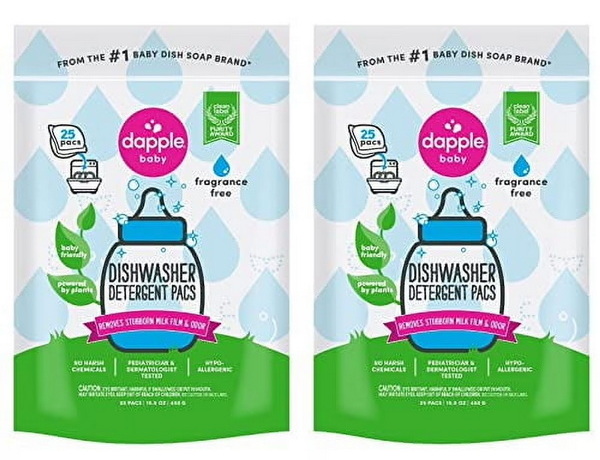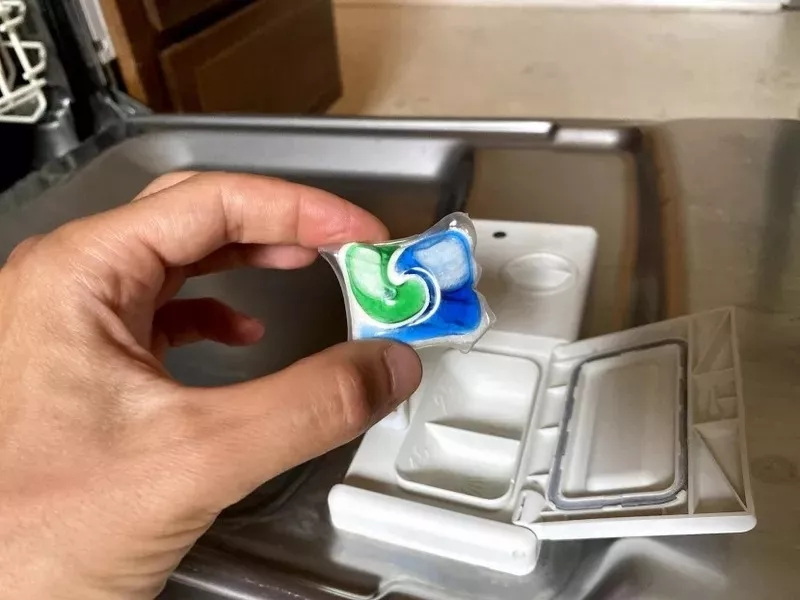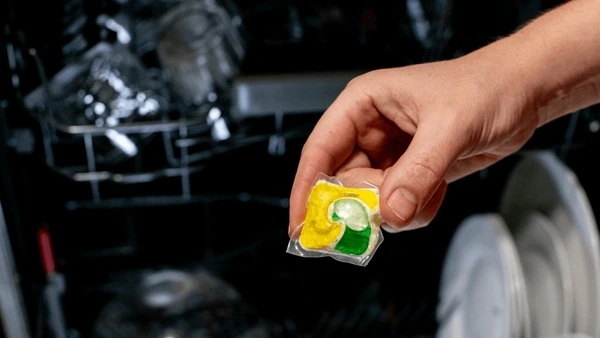Dongguan UFine Daily Chemical Co.,Ltd.
- All
- Product Name
- Product Keyword
- Product Model
- Product Summary
- Product Description
- Multi Field Search
Views: 222 Author: Tomorrow Publish Time: 10-30-2025 Origin: Site











Content Menu
● What makes a detergent pod healthy?
● Dapple product positioning and ingredients
● Safety and handling considerations
● Performance and health trade-offs
● Comparative health perspective
● Usage tips for health-conscious consumers
● Consumer safety and regulatory context
● Environmental considerations
● Evidence-based conclusion on health aspects
● FAQ
>> 1. Are Dapple dishwasher pods fragrance-free?
>> 2. Do Dapple pods contain phosphates?
>> 3. Are Dapple pods safe for households with children?
>> 4. Do Dapple pods leave film on dishes?
>> 5. How biodegradable are Dapple pod ingredients?
Dishwasher pods have become popular for their convenience and cleaning power. Among the brands competing for consumer trust, Dapple has positioned itself as a provider focusing on ingredients that appeal to health-conscious households. This article examines what makes Dapple dishwasher pods potentially healthy, what ingredients they use, how they perform in terms of safety and environmental impact, and practical considerations for users who prioritize health and wellness in cleaning products. The analysis draws on publicly available product information, standard industry chemistry, and consumer safety guidance to present a balanced view of health considerations, performance, and usage tips.

When evaluating the health aspects of dishwasher pods, several criteria commonly matter to consumers:
- Ingredient transparency and safety: Are the ingredients disclosed, and are any ingredients known to be irritants, allergens, or environmentally concerning?
- Skin and respiratory safety: Can handling the pods cause irritation, and is there risk during use or accidental exposure?
- Child safety: Do packaging and pod design reduce the risk of accidental consumption by children?
- Environmental impact: Are ingredients biodegradable, and is the product formulated to minimize ecological disruption?
- Efficacy without harsh solvents: Does the product clean effectively without relying on aggressive or toxic solvents?
Dapple emphasizes a formulation that aims to reduce exposure to harsh chemicals while maintaining cleaning performance. The brand often highlights the use of plant-derived or naturally sourced ingredients, coupled with a focus on fragrance-free or mild scents to minimize potential irritants. Key considerations include:
- Cleaning agents: Basic dishwasher detergents rely on builders, surfactants, enzymes, and sometimes bleaching agents. A health-forward formulation tends to favor milder surfactants and safer enzymes, while avoiding highly oxidizing or caustic components.
- Fragrance and dye: Many health-oriented brands minimize or omit synthetic fragrances and dyes that can irritate sensitive individuals.
- Residual safety: After a cycle, the pods' residues should not leave harmful residues on dishes or in the wash water.
Handling dishwasher pods requires attention to safety, especially around children and pets. The pod design, packaging, and user instructions should address:
- Child-resistant packaging: Bottles and blister packs that deter easy access by children.
- Clear labeling: Warnings about keeping out of reach of children and avoiding puncture or ingestion.
- Proper storage: Dry, cool storage away from moisture to prevent pod dissolution outside the dishwasher.
Healthy formulations may occasionally trade off some cleaning power for ingredient safety. In practice:
- Cleaning efficacy: A pod still needs adequate surfactants and enzymatic action to break down food soils and grease.
- Water quality considerations: Hard water can reduce cleaning efficiency; some pods include chelating agents to mitigate mineral buildup.
- Machine compatibility: Pods should be designed to dissolve at appropriate cycles and temperatures to avoid leaving film or residue.
When comparing Dapple to other brands marketed as healthy or eco-friendly, consider:
- Ingredient disclosure: Do other brands provide complete ingredient lists?
- Allergens: Are there common allergens present, such as citrus extracts or certain essential oils?
- Biodegradability: Are the surfactants and additives readily biodegradable?
- Packaging sustainability: Is the packaging recyclable or reusable?

- Follow load size guidance: Use the recommended number of pods for the load to avoid over- or under-dosing.
- Rinse considerations: If you prefer minimal residue, run a rinse aid or choose a pod designed to minimize residue.
- Water temperature: Use appropriate wash temperatures to maximize cleaning efficiency with milder formulations.
- Storage: Keep pods in their original containers and away from moisture to prevent premature dissolution or exposure.
- Regulatory oversight: Dishwasher detergents fall under consumer product safety regulations that address labeling, packaging, and ingredient disclosures. Brands that emphasize health-friendly formulations often align with these standards and pursue third-party certifications where available.
- Allergic risk: Some individuals may react to specific ingredients, even if overall formulations are milder. Always test new products in a small, inconspicuous situation if you have sensitive skin or known allergies.
- Biodegradability: A health-conscious product often prioritizes biodegradable surfactants and minimal persistent chemicals.
- Water system impact: Reduced use of phosphate-based builders and other persistent compounds supports lower environmental burden.
- Packaging footprint: Recyclable or reduced-plastic packaging aligns with broader sustainability goals.
- Availability and accessibility: Availability of Dapple pods may vary by region and retailer. Availability can influence consumer choices based on local product lines and pricing.
- Cost comparison: Health-oriented products sometimes come at a premium. Weigh the incremental value of health and safety aspects against cost.
- User reviews: Consumer feedback often highlights performance trade-offs, scent preferences, and perceived safety, which can guide personal comfort and trust.
Dapple dishwasher pods are positioned to appeal to health-conscious consumers by emphasizing ingredient transparency, reduced harsh chemicals or fragrances, and a focus on safety and environmental considerations. The healthfulness of any detergent also depends on individual sensitivities, water quality, and dishwashing practices. For most households seeking a milder, potentially less irritating option without sacrificing cleaning performance, Dapple can be a reasonable choice. However, as with all cleaning products, users should follow safety instructions, store pods securely, and be aware of potential allergic reactions or sensitivities.
Choosing dishwasher pods with health considerations in mind involves balancing ingredient safety, cleaning efficacy, and environmental impact. Dapple presents a strong option for households seeking milder formulations and transparent ingredient practices, while maintaining practical dishwashing performance. Prospective buyers should assess their sensitivity to fragrances, regional product availability, and budget to determine if Dapple aligns with their cleanliness and health priorities.

Yes, Dapple often promotes fragrance-free or mild-scent formulations to minimize irritants, though specific product variants may vary by region.
Many health-forward dishwasher detergents have moved away from phosphates due to environmental concerns. Check the ingredient list on the exact product variant you purchase to confirm phosphate content.
Dapple products typically use child-resistant packaging and include clear safety warnings. Always keep pods out of reach of children and follow storage instructions.
Most Dapple formulations are designed to dissolve fully during the wash cycle to minimize residue. If film is reported, ensure you use the recommended load size and adjust rinse settings as needed.
Dapple emphasizes eco-friendly ingredients, but the biodegradability of each component depends on the specific surfactants and additives used in a given variant. Review the product's sustainability data for precise details.